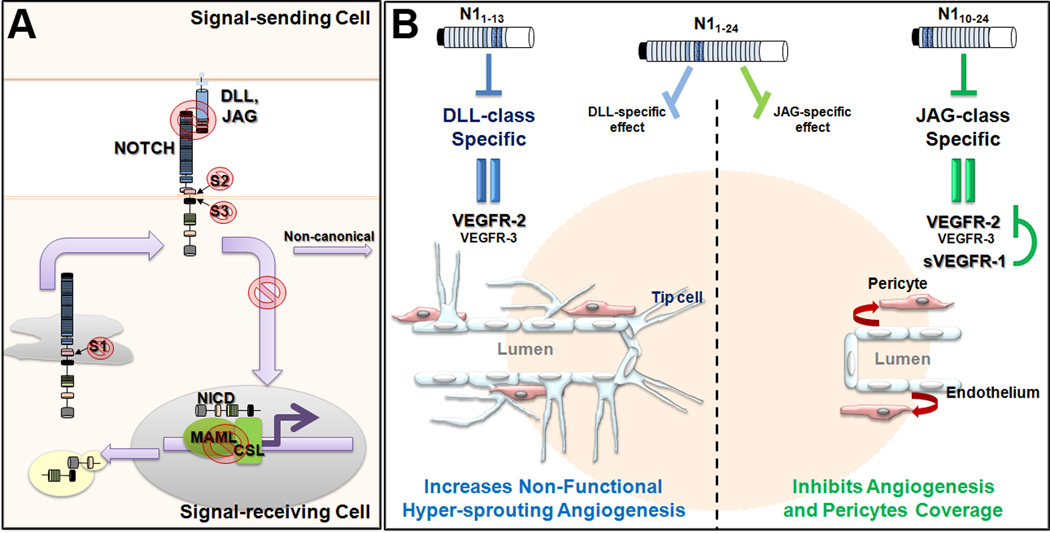Figure 1.
A- The knowledge acquired on canonical Notch signaling offers several targets to modulate the pathway. The generation of Notch Intracellular Domain (NICD) could be restricted by targeting the processing of Notch after cleavage by Furin (S1), metalloproteases (S2) and/or γ-secretase complex (S3). Modulation of Notch signaling can also be achieved by affecting the interaction of with the transcriptional complex (MAML/CSL). These approaches have caveats and OFF-targets effects. Disruption of Notch signaling can be accomplished by perturbation of Ligand/Receptor interactions. B- Blockade of Notch signaling by ligand-specific Notch decoy peptides. N1–13 specifically inhibits DLL binding to Notch leading to hyper-sprouting angiogenesis secondary to VEGFR-2 overexpression. In contrast, N10–24 binds and blocks JAG-mediated Notch signaling resulting in overexpression of VEGFR-2 together with soluble VEGFR-1 (sVEGFR1) that competes with VEGFR-2. As a result, endothelial proliferation and angiogenesis are blocked. In addition, specific blockade of JAG-mediated Notch signaling affects pericyte coverage and subsequent vascular integrity. Finally, N1–24 a pan-Notch inhibitor, have dominant ligand-effect depending on context. The use of either of the decoy Notch peptides blocks functional angiogenesis and decreases tumor growth.

